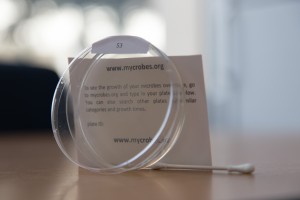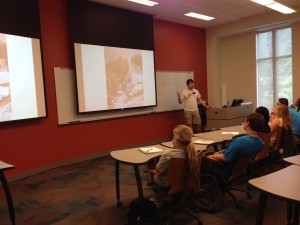by Itai Doron
While there has always been an innate emphasis on researchers to engage the scientific community through publications and research proposals, a experimental method known as citizen science is leading to newfound emphasis on the scientific community’s engagement with the public. It is typically utilized by providing citizens of a certain locality with instructions for data collection. As I continue to explore graduate programs with a focus on the microbiome and microbial ecology, I have been struck by the number of faculty members involved in citizen science. Several collaborations, such as the Wildlife of Our Homes, connect labs (and their local communities) from across the country.
One of my own exposures to citizen science was with the Gerardo lab through the Atlanta Science Festival. At this event, we premiered the website mycrobes.org. Visitors of our booth were provided a plate with bacterial medium and allowed to inoculate it with a body surface or anything else in their environment. Pictures were taken daily for a week and uploaded to the website. Not only is the website still available, but certain members of the lab are working on updating the website and data collection methods for integration into the biology curricula of local Atlanta schools.
Although the importance of generating interest among science outsiders and kids in society cannot be understated, the integration of citizen science also benefits the scientific community, especially among researchers focused on certain microbial symbionts and the microbiome. Research like the projects undertaken by our lab have become possible due to our improving ability to collect and sort large volumes of data from an environment, but this sort of inquiry only results in significant findings if we can find trends in data across many individuals or across multiple environments. Insect collection, for example, could present this problem, especially if the insect of interest is associated with multiple habitats. The utilization of resident insect collectors across these habitats would save us time in the experimental process.
I certainly look forward to future involvement in citizen science during the remainder of my undergraduate career and beyond.



